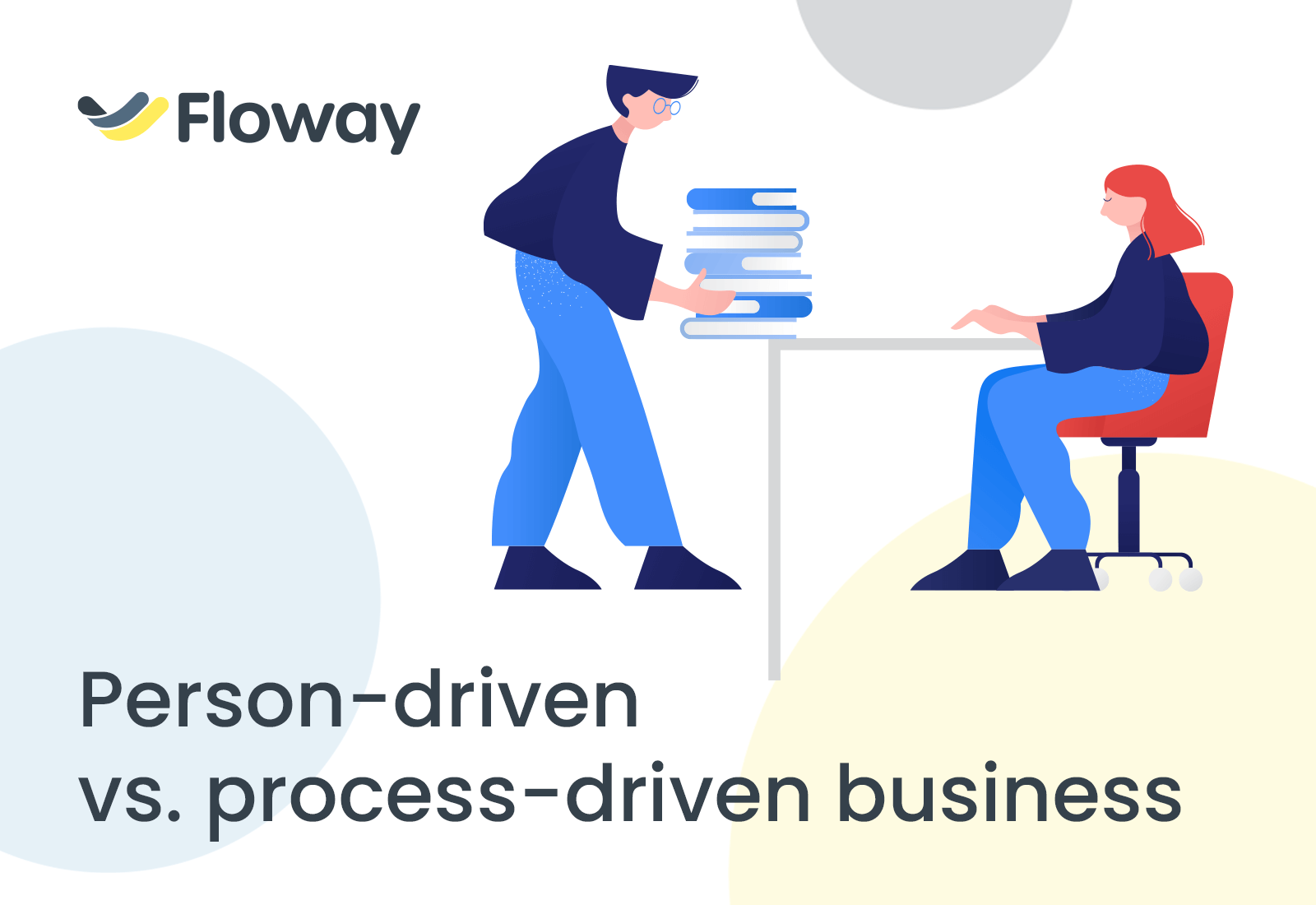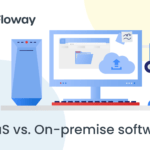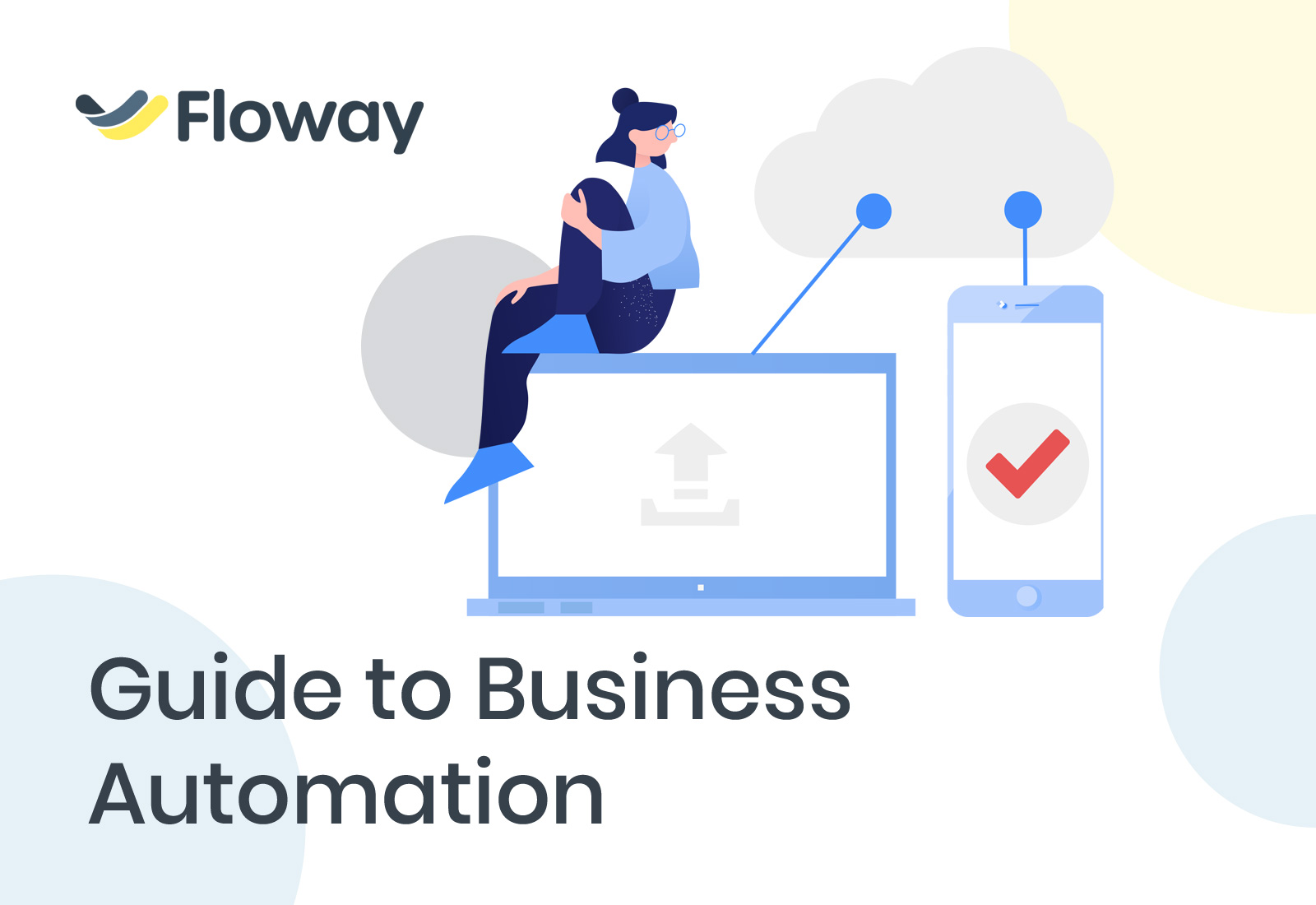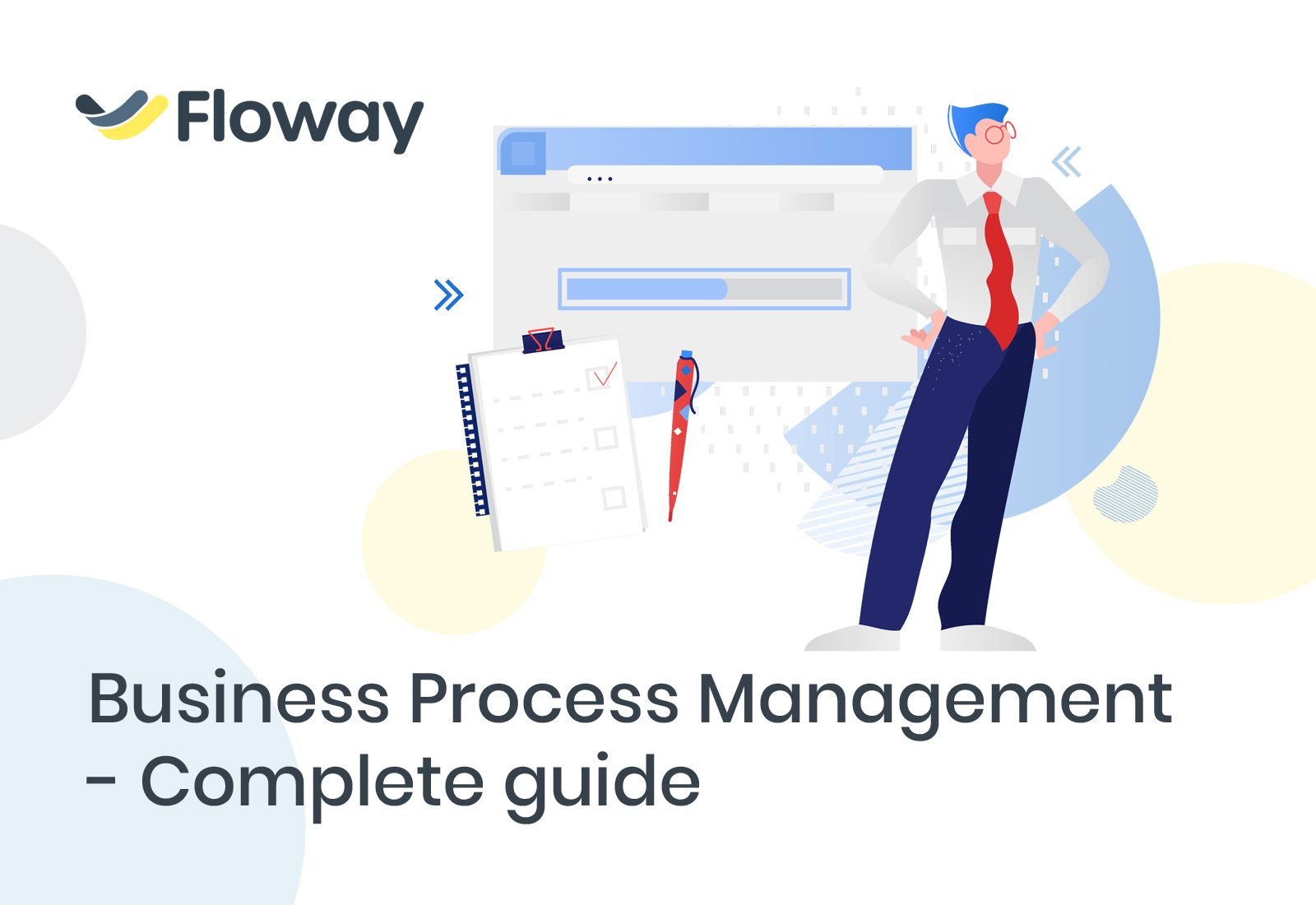Person-driven vs. process-driven business
Progressively more companies shift from a person- to a process-driven business model. During the pandemic entrepreneurs and IT leaders needed to adapt to sudden remote work, accelerating the digital transformation towards systemizing workflow and automation. Effectively, those organizations that successfully adapted to the crisis, became more process- than people-driven businesses. What exactly is the difference and how can one leverage technology to focus on process systemization?
Person-driven business as the model of the past
A person-driven business is an organization that relies on people’s skills to deliver a product or service. The operations, as well as growth, heavily depend on the employees. Person-driven businesses rely on great managers to motivate the team and drive the company forward. This model was a default one before the development of current technology, but now it’s being replaced with the process-driven one due to several limitations.
Time limitations
People have limited time they can spend working. This doesn’t only apply to the number of hours, but more importantly – focus. Statistics show that employees can effectively work for less than 3 hours in an 8h workday setting. This puts a cap on workplace productivity and in addition to other factors (such as motivation) influencing overall engagement costs U.S. businesses between 450-550 billion dollars every year. Managers and board members responsible for crucial decisions also have limited time to make judgments, effectively delaying improvements and growth.
Labor market
A people-driven organization relies on having employees with the right skills at the right time. The common assumption is that those employees might be acquired when necessary, but it’s not cost- nor time-effective. Companies spend over $5,000 each time for recruitment and onboarding. This doesn’t include the first few months needed for a new employee to become truly productive. On top, businesses have to face bigger competition to recruit skillful people, as remote work became the new standard increasing their possible job prospects.
Agent-Principal Conflict
The company’s mission often doesn’t align with the employee’s mission. Nowadays people perceive their jobs as a path in their personal career but are more likely than ever to disengage or even drop the position once it no longer seems important personally. This challenge might be resolved with a great company’s culture and motivation techniques. Still, actively disengaged employees might impact the whole organization in a harmful way.
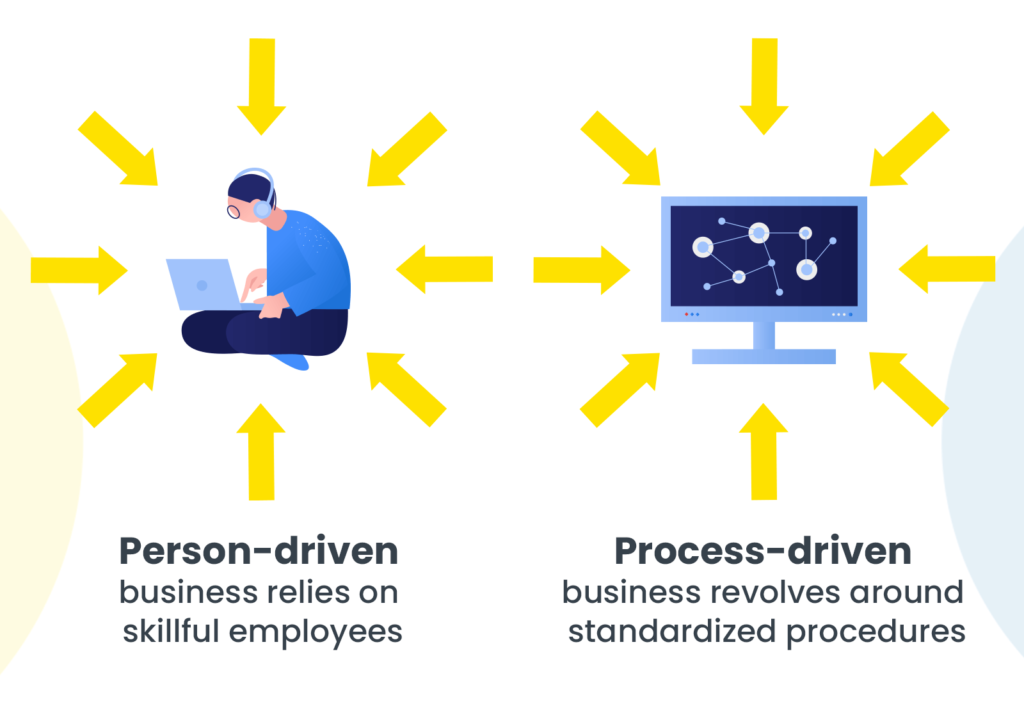
What is process-driven business?
The process-driven business focuses on standardized procedures to complete its objectives. It shifts the responsibility for operations from people to pre-set processes and workflows. This model creates a structured environment, where people don’t have to assume their tasks and goals. Process-driven companies develop and optimize procedures to minimize any unnecessary steps. It’s compatible with the Kaizen management model with the goal of maximizing productivity and eliminating waste (including wasted time).
Is process-driven business better?
The process-driven business has some significant advantages to the person-driven model. It focuses on mapping out the models of procedures performed in the organization that ensures clarity of tasks and responsibilities even in crises. The person-driven company on the other hand assumes that the skillful and knowledgable team handles those circumstances themselves, supervised by management.
In process-driven organizations, the accountability lies on the organization and its preparation to map out the models. Person-driven business puts the responsibility on its employees, thus being more vulnerable in terms of human error, liability, and authority.
Optimization
Process-driven business creates an environment, where optimization of the procedures is a natural part of the structure and involves the whole organization, not just management staff. For example “Optimization of the process quality” procedure that’s part of the Floway templates enables any team member to address any improvements needed and offer solutions.
Scaling the business
Managing a rapid growth of a business is much easier in process-driven organizations. The structure of operations is already clear, thus changing and updating it takes less time and effort. New teams might be assigned with corresponding tasks with a click of a button, without exhausting current management staff or hiring progressively more supervisors.
How to become a process-driven business?
The common misconception with shifting from person-driven to the process-driven organization is that documenting the processes is enough. It standardizes the procedures in the company but doesn’t ensure following those processes. That’s why it’s important to have a system, where employees are set to success with pre-set models. There are workflow tools that enable monitoring the progress and following the procedures. More advanced solutions, such as Business Process Management (BPM) software allow one to map out the models, assign tasks to the responsible departments and managers, and automatically forward them to be revised, effectively streamlining the whole operations.
Shift to a process-driven business with Floway
Transition from a person-driven to a process-driven business requires knowledge concerning mapping out the models and procedures. It’s much easier with ready-to-use templates and a team of professionals, who implement the system and ensure its optimization. This is just a fraction of what Floway offers.
Floway is a no-code Business Process Management and workflow automation tool. It operates on a cloud-based model that supports remote work. Floway manages even complicated procedures in a user-friendly and effortless environment.
Read more about Floway and try our 30-day Free Demo
Post a Comment
You must be logged in to post a comment.

